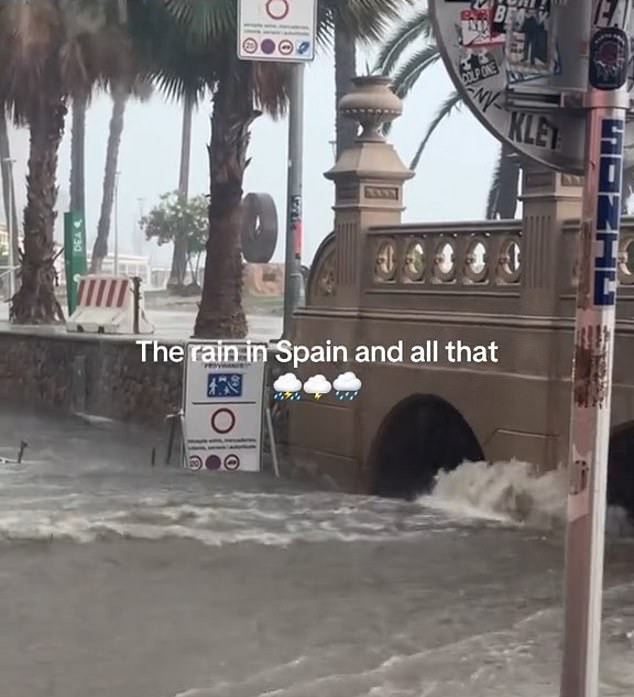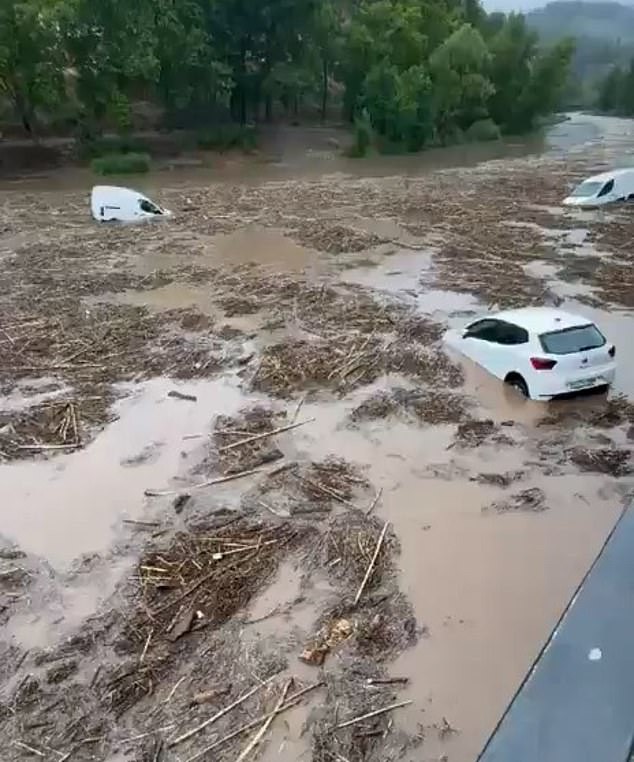Severe floods and thunderstorms continue to batter popular holiday destinations across Spain whilst Britain enjoys its third heatwave of the summer, creating a stark contrast in weather conditions across Western Europe.
The State Meteorological Agency (AEMET) has issued weather warnings for 25 of Spain’s 50 provinces this week, with eight under orange alert status. Dramatic footage circulating on social media shows picturesque Spanish streets transformed into torrents of muddy water, with floodwater surging past shops and restaurants in tourist areas.
The extreme weather has particularly affected northern and eastern regions of Spain, including popular British tourist destinations such as Barcelona, Girona, Tarragona, and the Balearic Islands. The warnings come at the height of the summer holiday season, threatening to disrupt travel plans for thousands of tourists.
In Tarazona, Zaragoza, nearly 100 millimetres of rain fell in just one hour on Friday, prompting authorities to issue a red alert for the area. The Ebro Riverbank was particularly affected by the deluge, with local emergency services struggling to cope with the unprecedented rainfall.
The Spanish Military Emergency Unit (UME) has been deployed to several towns across Zaragoza province to assist with flood control efforts. Over 30 flood-related incidents have been reported in the past two days, including blocked roads, fallen trees, and damaged properties, though authorities report no casualties thus far.

AEMET meteorologists attribute the severe weather to a DANA phenomenon, or “Depresión Aislada en Niveles Altos” (isolated depression at high altitudes), commonly known as a “cold drop.” This occurs when warmer Mediterranean air is drawn high into the atmosphere following a cold system hitting the region.
“Over the past few days, there has been a progressive increase in instability, with moderate easterly and north-easterly winds bringing significant moisture to the Iberian Peninsula,” an AEMET spokesperson stated. The agency predicts 50 litres per square metre of rainfall in regions of Aragon and Catalonia, with potential for local flooding in valleys and ravines.
The current flooding follows a pattern of extreme weather events in Spain, including devastating floods in Valencia in October 2024 that claimed over 200 lives. Climate scientists warn that such events are becoming more frequent and intense due to climate change, with warmer Mediterranean temperatures fuelling stronger storms.
Meanwhile, Britain is experiencing dramatically different conditions as the country enters its third heatwave of 2025. The Met Office reports that large swathes of the UK have met heatwave criteria, with temperatures expected to reach 34°C in central and eastern England this weekend.
Met Office Chief Meteorologist Matthew Lehnert confirmed: “Sunday will be another hot day quite widely across the southern half of the UK, with temperatures forecast to reach 31°C in the south east of England. Temperatures will be higher still on Monday, with highs of 34°C possible.”
The UK Health Security Agency has issued amber and yellow Heat Health Alerts covering all of England, valid until 14 July. Unlike previous heatwaves this summer, which were largely confined to southern Britain, the current hot spell is affecting a broader area, extending into Scotland and Northern Ireland.
Scotland is expected to see temperatures of 31 or 32°C over the weekend, whilst Northern Ireland could approach 30°C. This represents the most widespread heatwave of the summer so far, with pollen and UV levels remaining very high across many areas.
June 2025 has already been confirmed as England’s warmest June on record, with a mean temperature of 16.9°C. The UK overall recorded its second warmest June since records began in 1884, with only June 2023 surpassing it.
The contrasting weather conditions highlight the increasingly volatile nature of European weather patterns. Dr Jorge Olcina, a geography professor at the University of Alicante, explained: “We can now go several months without a drop of rain, and then have a major storm again in the summer.”
For British tourists in Spain, authorities are urging caution. AEMET has extended warnings to popular destinations including Huesca, Teruel, Zaragoza, Barcelona, Girona, Lleida, Tarragona, and Castellón, advising visitors to avoid unnecessary travel and prepare emergency supplies.
The extreme weather on both sides of the English Channel underscores the growing impact of climate change on European weather systems. Met Office scientists recently published research showing that the chance of exceeding 40°C in the UK is “accelerating at pace,” whilst Spain faces increasingly frequent and severe flooding events.
As Europe grapples with these weather extremes, both Spanish and British authorities continue to monitor conditions closely, issuing regular updates and safety guidance to residents and tourists alike.
Follow for more updates on Britannia Daily



